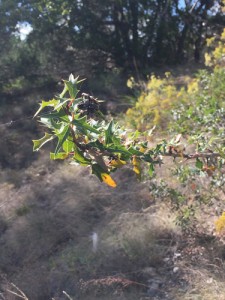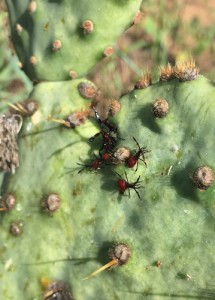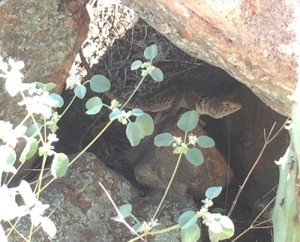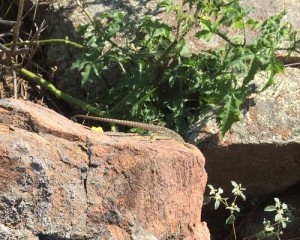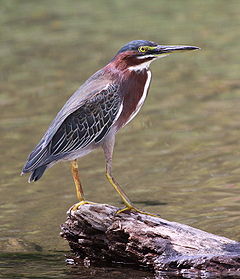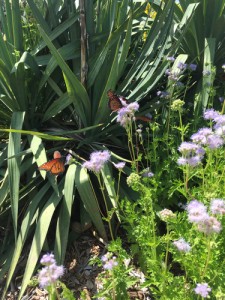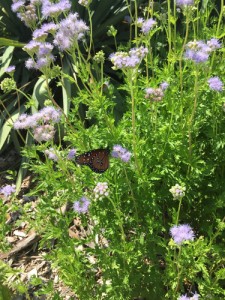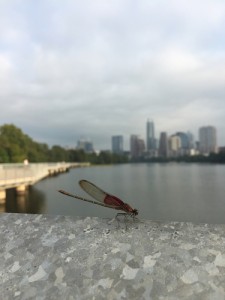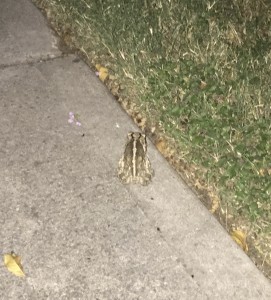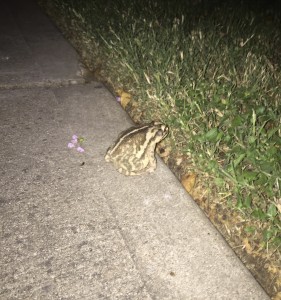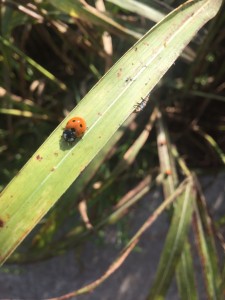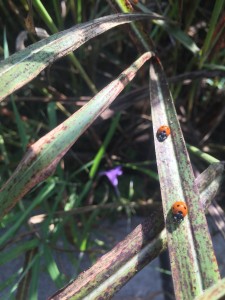This week’s observation comes from Wild Basin while conducting research. At first when looking at this photo, it is easy to see the branch sticking out, which belongs to an agarita (Berberis trifoliolata).
However, the hidden star of this photo is the spider hanging out on that branch. This spider was at first hanging out in the middle of its web, when I almost went face first into it. Thankfully, one of my research team members let out a little scream, keeping me from running right into the spider.
When posting this observation to iNaturalist, I had hoped for the community to return an identification for the spider. However, due to strange disconnects between my photos and the app, I was unable to zoom further in to the spider, and thus the iNaturalist community returned an observation for the easily seen branch. Oh well!
Agarita is a low maintenance, drought tolerant, evergreen shrub. It flowers from February through April, following with a bright red berry that attracts birds and small mammals. Its range is from west Texas to Arizona and northern Mexico, growing on rocky limestone flats and slopes.
My iNaturalist post can be found here, and if you have any idea what kind of spider this is, please comment to let me know!
Sources: http://aggie-horticulture.tamu.edu/ornamentals/nativeshrubs/mahoniatrifol.htm
